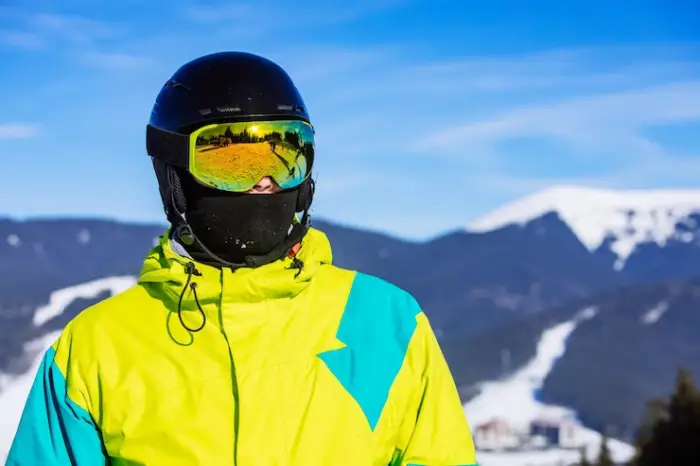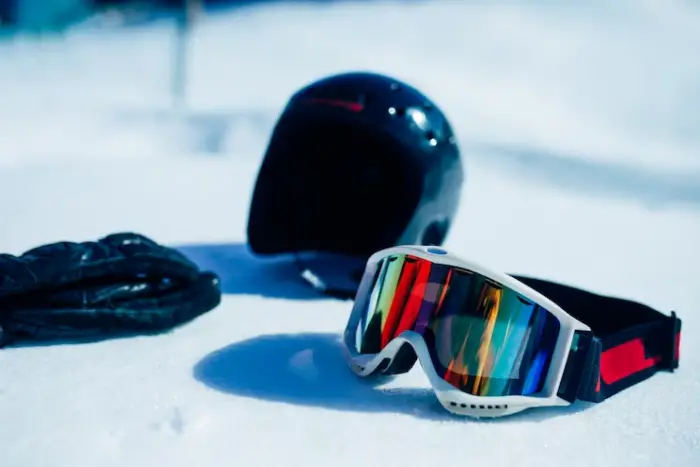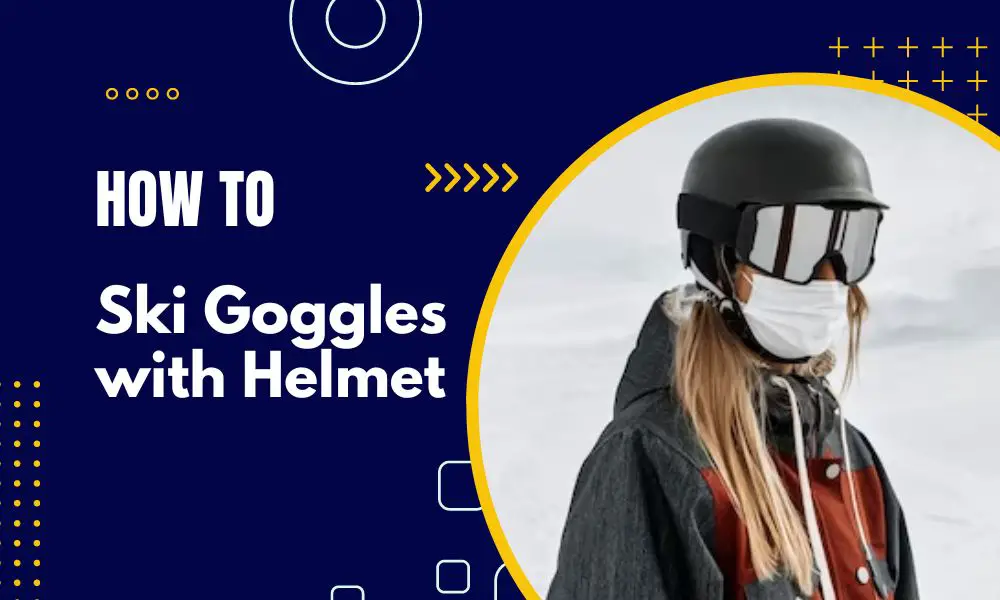The helmet is not an outfit accessory but safety equipment. And that too a very necessary one. So you should definitely learn to wear them properly!
And for that, you are in the right place!
How Do You Wear Ski Goggles With Helmet?

Select Helmet Compatible With Your Ski Goggles
If your ski goggles don’t fit inside your helmet, then why are you even thinking of wearing them? Before you begin, always check if your ski goggles and your ski helmet are designed to be compatible with each other or not. If they are not compatible, that is they don’t complement each other’s size then the helmet might fall down while riding. The same can happen to ski goggles as well.
But if your helmets have a goggle clip or strap at the back, specifically designed to hold the goggles in place, you need not worry much. The goggles should fit snugly against the face and have a strap long enough to accommodate the helmet.
Put On The Helmet
Place the ski helmet on your head and adjust the fit through the straps. I hope you do not need to be taught that! Ensure that the helmet is fitting you perfectly like a beanie on your head, not too tight or too loose. The helmet should sit level on your head, covering your forehead and not tilting backward or forward. It can disrupt your vision if they are tilting forward, and can fall back effortlessly if they are backward tilted.
Adjust the Goggle Strap
With the helmet on, take the ski goggles and adjust the strap length if needed. Loosen the strap enough to comfortably fit over the helmet without pulling too tightly on the goggles against your face.
Position the Goggles
Hold the goggles against your face, positioning them comfortably over your eyes. The goggles should sit snugly against your face to form a seal around your eyes.
Attach the Goggle Strap to the Helmet

Once the goggles are correctly positioned on your face, carefully pull the goggle strap over the back of the helmet. Find the goggle clip or strap at the back of the helmet and secure the strap in place. If your helmet doesn’t have a clip then check that the goggle strap is securely positioned on the back. This ensures that the helmet has no chance of sliding down even while you are skiing at the fullest speed. Remember not to go too hard though!
Check Fit and Comfort
After attaching the goggles to the helmet, check the fit and comfort. Ensure that the goggles stay in place without sliding or shifting during movement.
Test Visibility
Before hitting the slopes, check whether the goggles provide clear visibility and if there are no obstructions in your field of view. Adjust the positioning if needed to optimize your vision while wearing both the helmet and goggles.
It is a pretty easy and simple process. Nothing very complicated about it. If your size is correct, everything will be smooth like butter!
Why Should Helmet Be Worn While Skiing Along With Ski Goggles?

If you ask why you wear helmets, then you should know the answer already! Of course, it is for safety, and that’s the most basic answer for this. Do you think that you need helmets in snow for the same reason? Well, you do need them for reasons that go beyond potential accidents.
Very important point! Helmets provide crucial protection for the head and brain. Come on, how will you function without your brain? Skiing involves high speeds and in the process, you can collide with other skiers or stationary objects like trees or rocks. In the event of a fall or impact, a helmet acts as a protective barrier, absorbing and distributing the force of the impact without letting it reach the skull. Wearing a helmet reduces the risk of head injuries and concussions.
Do you think ski goggles are enough to protect your eyes from all the harmful properties present in the air? They are actually very effective. Ski goggles excel in protecting the eyes, and you cannot question it in any way!
When cold temperatures and wind causes the eyes to become dry, ski goggles create a sealed barrier around the eyes, maintaining warmth. This is what helps you secure the best of your vision!
But what protects you from the ski goggles in the event that you fall down and they break? There’s a chance that the broken lens pieces can get inside your eyes and cause a much bigger problem. You will need the helmet at such a time.
By wearing helmets over ski goggles, skiers create a safer boundary for themselves. The ski goggles and the helmet complement each other so well! Just like bread and jam! But jam does not provide protection for the most vulnerable parts of the body, helmet and goggles do. Both novice and experienced skiers benefit from wearing helmets and ski goggles, as accidents can happen to anyone on the slopes.
In recent years, many ski resorts and organizations have made it mandatory for skiers to wear helmets because of the rising awareness about the accidents happening on the slopes. The use of helmets and goggles has become a practice for everyone even if they are skiing just for passing their time.
Conclusion
The main motive for wearing goggles and a helmet in the field is to not get hurt and enjoy the skiing experience without any optical disturbances. If you get hurt then it is going to ruin your chances to go skiing again. Imagine how bad it will hurt when you see your friends having the time of their lives on snow while you are just watching from the shed.
Felt extremely anxious just imagining it, didn’t you? Then take all safety precautions in the field. Stay safe!

